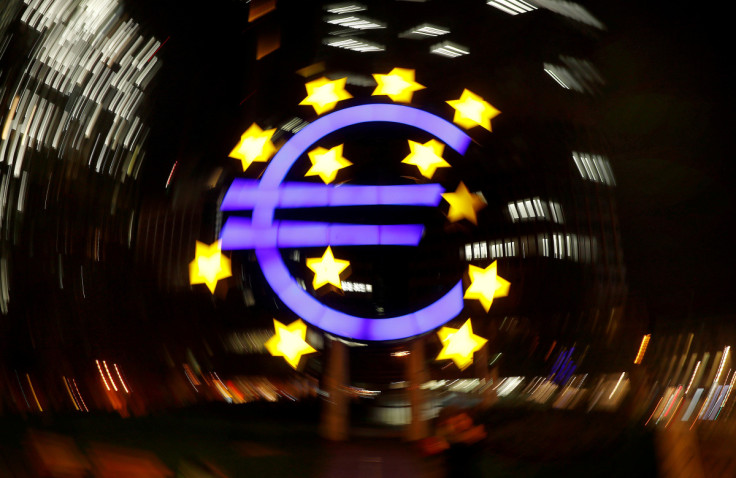Euro zone yields higher, German yield curve inverts
Euro zone yields were higher on Friday after plunging the day before when U.S.

Euro zone yields were higher on Friday after plunging the day before when U.S. inflation showed signs of cooling, while an inversion of the yield curve in bloc benchmark Germany highlighted recession fears.
Bond yields had plummeted on Thursday after data showed the U.S. core consumer price index , which strips out food and energy components, rose 0.3% in October after rising 0.6% the month before.
Analysts said lower-than-forecast inflation would likely see the Federal Reserve raise rates by a smaller 50 bps in December after four consecutive 75 bp hikes, although it was not likely to alter the view that rates will need to move into restrictive territory.
"The data consolidates the view that the next Fed meeting will see a 50 basis point hike," said Lyn Graham-Taylor, senior rates strategist at Rabobank, who is still calling for a peak in interest rates at 5%.
"We still think that this shouldn't be the start of a big risk rally as the easing of financial conditions works against the Fed's policy tightening. Our gut feeling was that the move yesterday was overdone," Graham-Taylor added.
Germany's 10-year yield was last up 6 basis points at 2.072% after dropping 17.5 bps on Thursday, its joint-largest one-day drop since Oct. 3.
The 2-year yield, more sensitive to changes in near-term interest rate expectations, was up 10 bps to 2.073% after dropping 14.5 bps on Thursday.
The yield curve between 2- and 10-year German yields inverted for the first time since Sept. 2008, according to Refinitiv data, indicating concerns about growth.
An inversion of the 2/10 section of a yield curve can often herald the onset of recession. This spread is used widely by U.S. fixed income investors to gauge the outlook for the economy.
Meanwhile, German consumer prices, harmonised to compare with other European countries, rose 11.6% year-on-year in October, confirming preliminary figures.
European Central Bank policy maker Joachim Nagel called for the central bank to begin shrinking its balance sheet alongside rate hikes to help bring inflation down.
Italy's 10-year government bond yield was up 11 bps to 4.124% but that was only after the closely watched gap between German and Italian 10-year yields earlier touched its joint-tightest level since July at 197.4 bps.
Analysts said the outlook for Italian bonds was less favourable as the ECB was expected to formalise plans to begin selling part of its bond holdings, so-called quantitative tightening (QT), next year.
"We're struggling to see how ECB QT doesn't see Italian bonds suffer," Rabobank's Graham-Taylor said.
"The fact we're going into what we believe will be a fairly large recession, we struggle to see how Italian bonds don't suffer during that process."
Eyes were also on geopolitical developments as China eased some of its heavy-handed COVID rules on Friday and Russia said it planned to withdrawal forces from Kherson in Ukraine earlier in the week.
"Geopolitics is difficult to predict, but the news should be a positive for markets," said Mohit Kumar, interest rate strategist at Jefferies.
Copyright Thomson Reuters. All rights reserved.





















